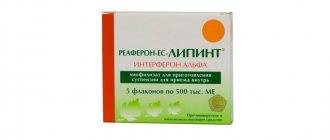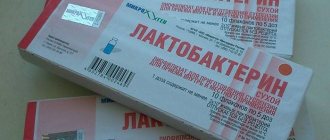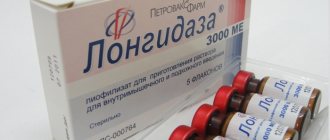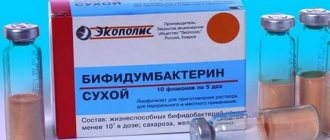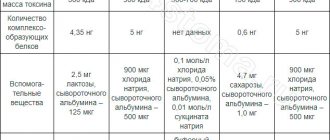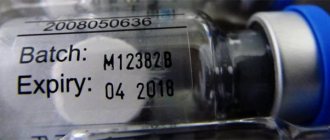What is Polyoxidonium used for?
This medicine corrects the body's immune defense against various infectious and systemic lesions. It alleviates physical condition, prevents intoxication by metabolic products, and shortens the acute period of illness. The active substance of Polyoxidonium is azoximer bromide.
The drug is produced in several forms:
- uncoated tablets containing 12 mg of active ingredient: yellow or orange, chamfered;
- suppositories: in a dosage of 6 or 12 mg, yellowish-waxy in color, torpedo-shaped;
- lyophilized powder for the preparation of nasal and parenteral solutions.
Form and components of the drug
Polyoxidonium is available in three dosage forms:
- tablets with a concentration of 12 mg - 10 pieces in a blister;
- powder for injections and droppers, 3 and 6 mg - 5 ampoules per package;
- suppositories for rectal and vaginal administration, 6 and 12 mg - 10 suppositories per package.
The bioactive substance is polyoxidonium or bromide azoximer. The tablets are white, a yellow tint is allowed, with a score line. Lyophilisate is a white, porous powder, possibly a shade of yellow. The candles are solid, light yellow in color with a faint cocoa aroma.
How does Polyoxidonium work?
Azoximer bromide stimulates the body's resistance to the aggression of pathogens: fungi, viruses and bacteria. It promotes accelerated synthesis of antibodies, restores defenses after diseases, chemotherapy, complex surgical operations, radiation exposure, long-term treatment with steroid hormones and cytostatics.
Polyoxidonium increases the resistance of cell walls to damage by biological and chemical toxins, accelerates regeneration, and helps reduce the duration of treatment. The drug is non-toxic, has high bioavailability, is completely metabolized by the kidneys, and does not accumulate in the blood and tissues.
Medicinal properties
Polyoxidonium is an immunomodulating drug that activates the body's defense mechanisms against the background of infectious and viral diseases. Pharmacodynamics consists of direct activation of phagocytosis and biological killers, enhancing the formation of immune cells.
The drug also acts as a detoxifier and stabilizes cell membranes.
Polyoxidonium can increase immunity when:
- acquired pathologies of immunodeficiency;
- autoimmune pathologies;
- physical damage;
- malignant tumors;
- complications after operations;
- long-term treatment with hormones or cytostatics.
As an antioxidant, you can drink Polyoxidonium to remove toxic compounds from the body. It prevents fat oxidation, and when added to combination therapy for oncology, it has shown a decrease in toxicity to the body during chemotherapy.
In acquired conditions of immunodeficiency, it can reduce the course of treatment and increase its effectiveness, reduce the need for antibiotics, hormonal drugs and prolong remission. The half-life is about a day, depending on the concentration. Excreted by the genitourinary system.
What is Polyoxidonium used for?
The drug is prescribed in complex therapy and independently:
- for respiratory infections, including recurrent ones;
- acute or chronic infectious lesions of internal organs;
- to reduce the side effects of immunosuppressants in rheumatoid arthritis;
- for recovery after a course of potent drugs or operations;
- for fractures, burns, trophic ulcers;
- for the prevention of ARVI during epidemics.
The treatment regimen and dosage form are selected individually depending on the disease and physical condition of each patient.
Sources
- Vavilova V.P., Vavilov A.M., Cherkaeva A.Kh. “Possibilities of modern therapy for acute respiratory viral infections in children” Consilium Medicum. Pediatrics, 2015, No. 3
- Official letter from RAACI
- Bulgakova V.A. Immunomodulators for the prevention and treatment of acute respiratory infections: the effectiveness of azoximer bromide. Therapeutic archive 12, 2014
- Morozova S.V. “The use of the immunocorrective drug Polyoxidonium® in acute infectious and inflammatory pathology of the ENT organs” Russian Medical Journal, Vol. 18, No. 24, 2010 5. Kharit S.M., Galustyan A.N. “Azoximer bromide is a safe and effective drug for the treatment of acute upper respiratory tract infections in children: a review of the results of double-blind, placebo-controlled, randomized phase II and III clinical trials.” Consilium Medicum. Pediatrics 2021 No. 2
How to prepare drops from Polyoxidonium powder
The lyophilized substrate must be diluted in distilled water or isotonic saline solution: 6 mg of powder per 20 drops (1 ml). It is important to ensure that the liquid is at room temperature.
The resulting drug is instilled into the nasal passages up to 4 times a day for 5–7 days:
- for respiratory infections;
- for the prevention of ARVI;
- for complicated rhinitis and sinusitis.
The drops can be stored for no more than 24 hours in a tightly closed bottle. After this period, it is necessary to prepare a new portion of the drug.
Treatment with injections and droppers
To prepare injections, the powder of one ampoule is diluted:
- adults – 1.5 ml of NaCl solution or water for injections;
- children from six months - 1 ml of injection water or NaCl solution.
To prepare droppers, Polyoxidonium is diluted:
- adults – 2 ml of isotonic solution, shake and pour with a syringe into a bottle with this solution with a volume of 0.2-0.4 l;
- for children – 1.5 ml of NaCl solution, shake and pour into a bottle with a volume of 0.15-0.25 l.
Prepared solutions cannot be stored - they must be administered immediately, and the excess volume must be disposed of.
For adults
For inflammatory foci, injections of 6 mg are given at a time, every day for three days, then after 48 hours. For genital, urological pathologies and herpes, Polyoxidonium is given at a dose of 6 mg every 48 hours, for a total of ten injections as part of a combination treatment.
For bronchial asthma - 6 mg per injection for two days in a row, then three more injections every 48 hours. For cancer pathologies and to prevent suppression of the immune system under the influence of tumors - ten injections in a similar dosage every 48 hours.
How often to use Polyoxidonium for each disease is decided by the attending physician, depending on the tolerability of the drug and the recurrence of pathologies.
For children
Permitted in this dosage form for six months. For inflammatory foci in the chronic form - 0.1 mg per kg of the child’s weight, in the acute form - 0.15 mg/kg. The course in the first case is up to 7 injections, in case of exacerbation – up to ten.
For atopic dermatitis, Polyoxidonium is given at a dose of 0.1 mg/kg every 48 hours, 5 injections per course. Despite the high safety profile of the drug, a child can repeat the course of treatment with Polyoxidonium no more than twice a year.
How to use Polyoxidonium suppositories
Medicinal suppositories are intended for rectal or intravaginal use. The total number of suppositories per course of treatment is 10 pieces. Repeated local therapy is allowed after 3–4 months.
The medicine is administered into the intestines once a day, in the evening, placing a 6 or 12 mg suppository 5–6 cm deep. Before the procedure, it is advisable to visit the toilet or do an enema. To relieve acute symptoms, the drug must be used daily. For maintenance therapy, it is enough to use it once every 2-3 days.
In the treatment of gynecological pathologies, 12 mg suppositories are used. They are administered before bedtime, placing them as deeply as possible into the vagina. For acute diseases, repeat the procedure for 3–4 days in a row, then proceed to maintenance treatment: 1 suppository every 2–3 days. For indolent chronic diseases, it is recommended to use suppositories 1-2 times a week.
Operating principle
Polyoxidonium has immunomodulatory, antioxidant, detoxifying and anti-inflammatory effects. So, this drug:
- helps stimulate the immune system to resist pathogenic viral, fungal and bacterial infections;
- activates the production of cytokines that destroy pathogens in the body;
- strengthens local immunity (when applied nasally or sublingually) and forms a kind of barrier to infections transmitted by airborne droplets;
- normalizes microflora in the intestines;
- relieves inflammation;
- accelerates the discharge of sputum if it forms;
- increases the overall tone of the body and promotes the healing process.
Reviews
- Svetlana: “About six months ago I got sick before a very important event. The doctor then told me that if I need to recover quickly, I need to include Polyoxidonium tablets in my treatment. The drug is not cheap, I’ll say right away, but the effect is simply amazing. The very next day after taking it I felt a significant improvement. I took these pills for 7 days in total. Now Polyoxidonium is my secret lifesaver.”
- Antonina: “My son caught a severe flu last winter. Not only was his temperature extremely high, but he also had a very bad headache and was constantly vomiting. He drinks some medicine and immediately takes it to the toilet. The pediatrician, after looking at all this, prescribed us Polyoxidonium in the form of suppositories. And thank God, things immediately got better for us. My son recovered quite quickly.”
- Alina: “My sister, who has three small children, told me about this drug. She said that before she practically didn’t know what healthy children were, because one would bring a virus, and everyone would get sick in a circle. However, after she discovered prophylaxis with the drug Polyoxidonium, the children practically stopped getting sick. And this is really so, I was convinced of this from personal experience.”
- Evgenia: “I give my son this drug for prevention twice a year. And, believe me, in a whole year I can get sick 1 or maximum 2 times! This is simply a magical remedy! The drug is expensive, but you waste a lot more money on illnesses!”
- Alla: “Incredibly effective pills! I haven’t heard anyone complain about them yet! Helped my child cope with the adaptation period in kindergarten. Now he walks without missing a beat, while everyone else continues to get sick.”
Analogs
If for some reason, for example, due to an allergy to the components of Polyoxidonium or its absence in pharmacies, it is impossible to take the drug we are considering, the doctor may prescribe you the following analogues, which have a similar principle of action and therapeutic effect:
- Cycloferon (indicated from 4 years);
- Imunofan (indicated from 2 years);
- Derinat (indicated from birth);
- Kipferon (indicated for children from 6 months);
- Amiksin IC (indicated from 7 years);
- Lykopid (indicated from 3 years).
Contraindications
This medicine is contraindicated in:
- individual intolerance to its components;
- renal failure;
- pregnancy and breastfeeding;
- up to 6 years of age (for suppositories);
- for children under 3 years of age (for tablets);
- lactase deficiency, lactose intolerance, glucose-galactose malabsorption (for tablets);
- up to 6 months of age (for solution).

